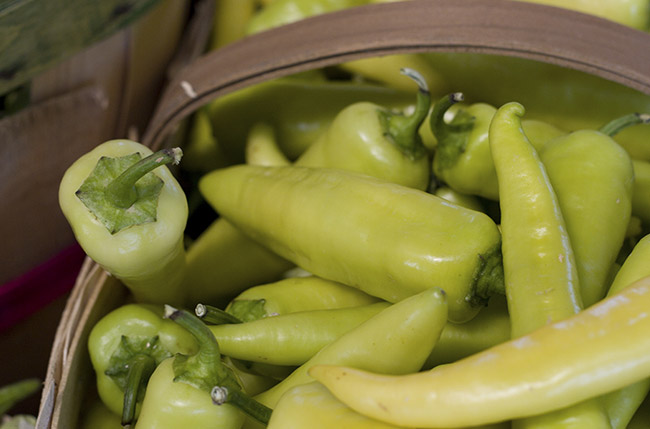
The Hungarian wax pepper is also known by its Spanish name, chile hungaro, or by the generic Spanish name for yellow peppers, chile guero. It is a pepper that is incredibly popular in Hungary, Croatia, and throughout Central Europe, and the Americas. It is a skinny, long pepper, with thin skin and thick flesh. The Hungarian wax pepper is a member of the species Capsicum anuum which is the species of plant that produces jalapeños, bell peppers and other spicy and sweet varieties of peppers. The plant is native to the Americas, and the variety of Capsicum anuum that produces the Hungarian wax chile originated in North America. It was introduced to Central Europe in the mid-sixteenth century, and it quickly became a staple in Hungarian and Serbian cuisine. This variety of pepper was well suited to the climate of Central Europe, as it grows well in cool climates. The Hungarian wax pepper was likely the first pepper to be used in the production of the spice, paprika. Although many other varieties of peppers are used to produce paprika, the spice was first produced in Hungary using the wax pepper. The English word, paprika, even comes from the Hungarian word, paprika, which basically translates as “little pepper.” The Hungarian wax pepper had been developed and cultivated for centuries in Central Europe and was introduced to United States in the 1930s. Over the long history of cultivating this pepper, it diverged into two separate cultivars, the Hungarian banana pepper and the Hungarian wax pepper. Both of them are similar in flavor profile and appearance, but the wax pepper is significantly hotter. The heat of the Hungarian wax pepper ranges from a mild 1,000 Scoville units to a spicy 15,000.
The Hungarian wax pepper is most frequently used while still immature and yellow. When the pepper is fully mature, it turns a reddish orange color. It is more commonly used in its immature state, because a fully mature Hungarian wax pepper is incredibly, almost unbearably hot. The pepper lends itself to pickling thanks to its thick flesh, and is often pickled in thin slices that can be easily added as a topping to just about anything. This pepper is very common in traditional Hungarian cuisine, including such recipes as goulash, porkolt (a Hungarian pork stew) and paprikash (a spicy dish made by stewing chicken with peppers and spices and served over dumplings or noodles). Hungarian wax peppers are often used in mole sauce, dips, stews and soups. They are great with appetizers, prepared chilled and thinly sliced, and served either on their own, with dip, or on a salad. They can also be stuffed with cheddar or cream cheese, sautéed and served as a tangy appetizer.
Fresh Hungarian wax peppers will have smooth, firm skin with a waxy sheen. They should be kept refrigerated and will last about a week. When the skin loses its sheen, and becomes wrinkly and soft, the pepper should not be used. When preparing the pepper, first remove the stem by slicing off the cap of the pepper. If less heat is desired, remove the seeds and membranes from the pepper. To do this, cut the pepper lengthwise, and scrape out the membranes and seeds with a spoon and discard. It is important to remember after working with spicy peppers to thoroughly wash your hands with soap and water before touching your eyes, face or any other sensitive body parts as the oils in the pepper can cause serious irritation.


 BACK TO PRODUCTS
BACK TO PRODUCTS